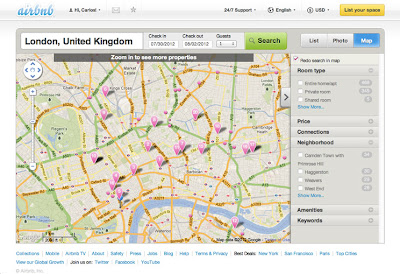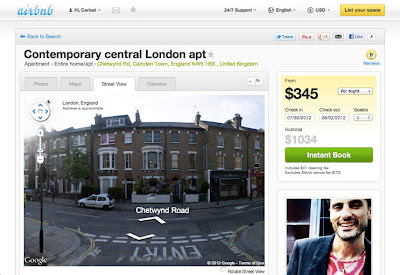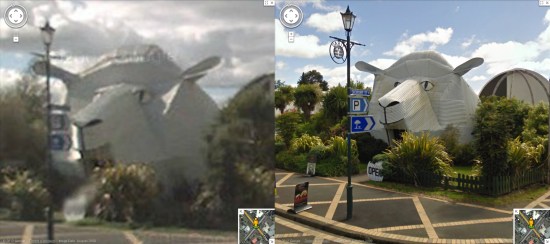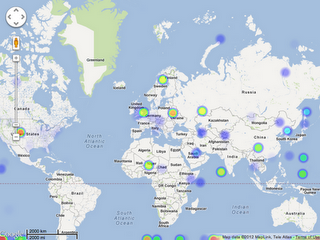Map of the Week: Airbnb
Why we like it: Airbnb has created a really great ‘search by map’ interface for their vacation rentals services. There’s also a really nice implementation of Google Street View to help renters make an informed decision about the rental and the surrounding neighborhood.
For a lot of people, the months of June, July, and August mean vacation time. As the price of just about everything rises, it can be difficult to find a unique and exciting place to stay within your budget. Luckily there’s Airbnb, which is a great way to find short-term accommodations rented out by private parties.
When it comes to finding the perfect place to stay, location is everything and Airbnb has invested heavily in creating mapping tools to make the right connections. A nice feature of the website is the ability to search by map for places to rent. The search interface is intuitive and easy to use.
For security reasons, you aren’t able to know the exact property or the exact address, but Airbnb places you in the right neighborhood so that you can use Street View to get a better idea of what’s around. A nice added UI feature is a “Rotate Street View” button, which automatically glides the imagery around the neighborhood.
Airbnb is a global operation and there’s a Google Map for everywhere there are Airbnb rentals (which is just about every corner of the globe). So wherever you’re travelling, there’s a good chance that Airbnb has rental for you and Google Maps API tools to help you find it. Good luck and safe travels on your next vacation!
via:googlegeodevelopers.blogspot.com



